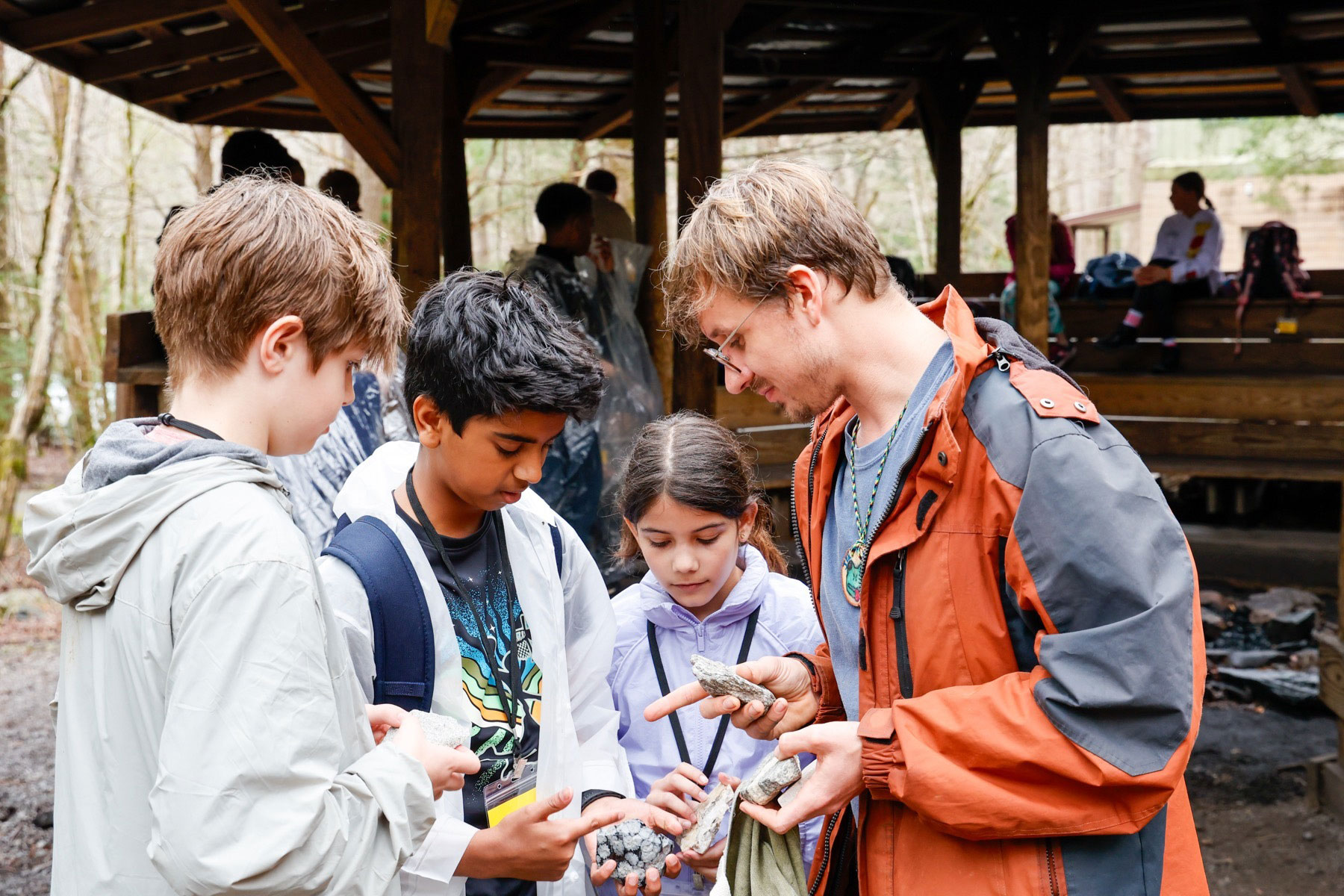
Anne Thomas-Abbott had a “profound” experience this October as she observed students taking part in a National Park Service curriculum about trees and carbon sequestration. The power of the lesson came from the real-life, hands-on engagement in the forest, as students measured trees in the Look Rock area of Great Smoky Mountains National Park to find out how much carbon specific trees could capture and store, pulling greenhouse gas out of the atmosphere.
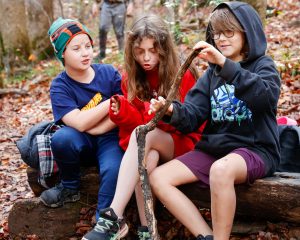
Though the students receiving the lesson on this particular day were in college, the curriculum is typically used for seventh graders. During her day at Look Rock, Thomas-Abbott saw how powerfully the outdoor lesson demonstrated practical uses of geometry and the Pythagorean Theorem as students measured the heights and diameters of trees, calculated their mass, and ultimately estimated how much carbon they were sequestering.
“Through this curriculum, seventh graders can understand a concept about how trees add mass to themselves through photosynthesis that I didn’t understand until I was out of college,” Thomas-Abbott said. “I could balance a photosynthesis equation, but I had not put together that trees use photosynthesis to store carbon, which is how they add mass to themselves. That’s my story to illustrate the power of taking learning—which is more and more relegated to an inside space and so conceptual that it’s hard sometimes for kids to really understand what they’re doing—out into a place where it’s actually being used.”
In her newly created position as Smokies school coordinator at Great Smoky Mountains Institute at Tremont, the park’s experiential education partner, Thomas-Abbott is working to ensure that ever-increasing numbers of students have access to these kinds of learning opportunities. Since her hire in August, she’s been working to build relationships with public school teachers and administrators in Tennessee’s Knox, Blount, Cocke, and Sevier counties, helping them understand the various environmental education opportunities available to them. Thomas-Abbott then works with teachers to identify the programs that might best fit their vision and capacity and helps them overcome any logistical hurdles that might prevent participation.
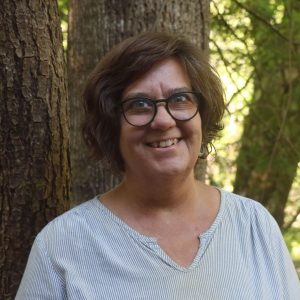
The new outreach position is the result of cooperation and collaboration between Great Smoky Mountains National Park and several of its nonprofit partners. Thomas-Abbott is a Tremont employee, but her salary is paid by the park’s philanthropic partner Friends of the Smokies. She steers teachers toward environmental education opportunities available through the National Park Service and Discover Life in America, a park partner focused on biodiversity science, as well as those offered through Tremont.
“We all have limited resources, and we can’t always serve the same school multiple times,” explained Susan Sachs, education branch coordinator for Great Smoky Mountains National Park. “If we had a coordinator position, we thought, that person could really help us figure out what individual teachers need and who is the best partner to provide it. It’s a way to be more efficient and effective.”
Sachs had specific ideas about who the ideal candidate would be—a retired teacher, preferably one from Knox County Schools. Even better, someone with experience at one of the schools that park programs work to support. Thomas-Abbott fit the bill precisely.
“We got really lucky with Anne,” Sachs said.
Thomas-Abbott is a Knoxville native who came up through the public schools and then, after earning a master’s degree and teaching license at the University of Tennessee in Knoxville, spent 30 years teaching English in Knox County Schools, where her son also attended. Twenty-seven of those years were at Fulton High School, an established partner in the environmental education programs offered by NPS, Tremont, and DLiA.
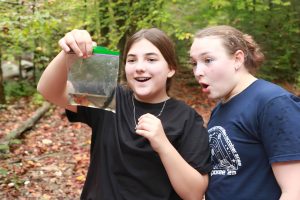
“I just went to an elementary school in Knox County today, and the person that I was meeting with happened to have been my son’s fifth grade teacher,” she said. “She’d had a name change since then, but we had an instant affinity for each other, and there’s instant trust there. It’s those kinds of connections that make it easy for me to walk into schools and be comfortable and also know what’s reasonable to expect.”
Thomas-Abbott’s community connections have allowed her to make great strides in her short time at Tremont, Sachs said. Because she’s local, she can attend evening events like career and STEM nights. She’s also working to develop relationships with additional schools, especially those feeding into Fulton and South Doyle high schools, which serve students and communities facing significant barriers to spending time in nature. The rapport she’s building with teachers is expected to lead to increased environmental education opportunities across grade levels.
“These are really critical conversations that allow us to be responsive,” said Sachs.
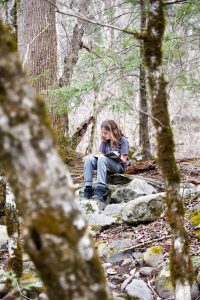
Environmental education brings learning to life, as Thomas-Abbott saw firsthand while shadowing the seventh-grade curriculum, broadening students’ perspectives as to what is possible, both academically and professionally. Research shows that students engaged in outdoor education have a higher intrinsic motivation to learn, leading to greater engagement and academic achievement. One teacher at a Knoxville elementary school reported that her students learning English as a second language seem to feel more confident in taking risks with language when they’re outside with their nature journals than when they’re in a traditional indoor classroom setting.
Thomas-Abbott’s work helps connect a constellation of environmental education efforts that have been underway for years in Tennessee counties near the national park. NPS hosts in-park day trips during the warmer months and in-classroom presentations during the colder ones, and its 21-year-old high school internship program has led many students to permanent park service positions. DLiA’s iScience program helps kids collect scientific data about biodiversity in their own schoolyards, and Tremont offers immersive, residential programs at its campus in the park as well as professional development to help teachers conduct environmental education lessons in their own classrooms or schoolyards.
“The barriers to participation are more than just the ones you could anticipate—time, transportation, money. And those are big ones,” said Thomas-Abbott. “But from my experience working in a school, you keep so busy as a teacher that it’s hard to manage extra time for planning things and doing paperwork and asking for permission and building resources. So my vision is to help fill in the gaps. Learn what’s going on out there and see who’s got a vision for something—and then see what I can do to support it.”
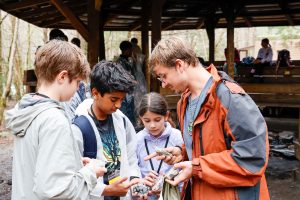
Her efforts layer atop those of Annie Roth, manager of the teacher network for Tremont who, like Thomas-Abbott, is a former public school teacher. When teachers express interest in incorporating environmental education into their classrooms, Thomas-Abbott can connect them with Roth, who focuses on professional development resources for teachers.
Through the Schoolyard Network, a community of educators seeking to incorporate more experiential learning into their classrooms, Roth offers a free monthly video call to share outdoor lesson plans, give teachers a place to discuss their experiences, and troubleshoot any issues they share. Roth also conducts a variety of trainings that allow teachers to experience the outdoor lessons they will later teach to their students. These range from Teacher Escape Weekends on the Tremont campus—where teachers can stay overnight before bringing their students—to on-site trainings at the most meager schoolyards.
“Our motto is ‘nature is where you are,’” said Roth. “For the professional development we do, I look for schoolyards that have maybe two maple trees and some fescue in front of them. We still see who’s living out here, ask really good questions, get curious, and connect with place, wherever that might be.”
Subscribe to get the latest posts sent to your email.
The Great Smokies Welcome Center is located on U.S. 321 in Townsend, TN, 2 miles from the west entrance to Great Smoky Mountains National Park. Visitors can get information about things to see and do in and around the national park and shop from a wide selection of books, gifts, and other Smokies merchandise. Daily, weekly, and annual parking tags for the national park are also available.